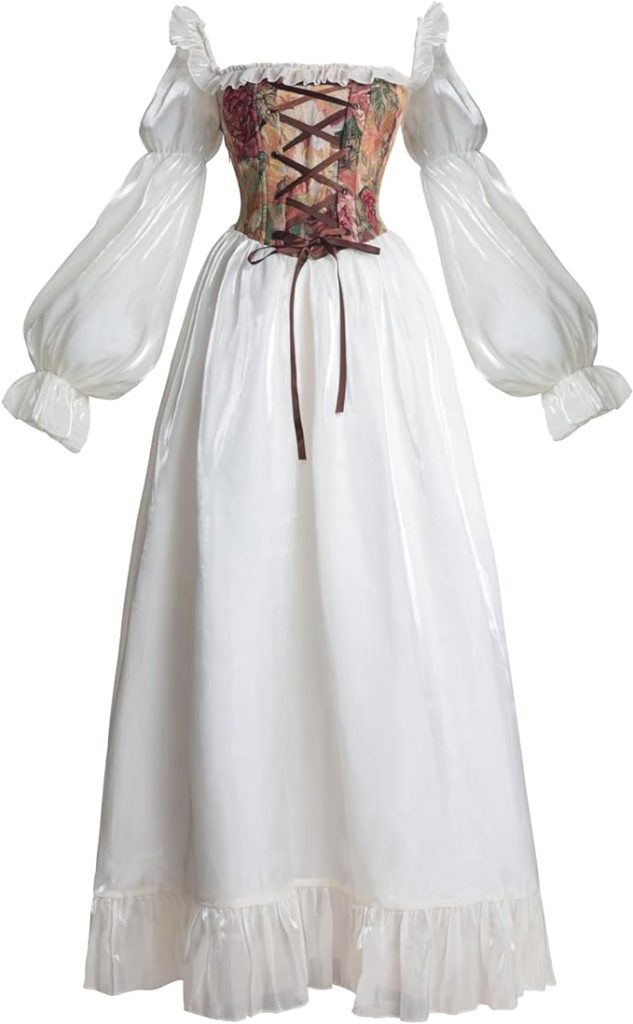
The Renaissance period of time was a time of immense cultural and artistic growth, leaving an indelible tag on history. on the far side its immediate impact, Renaissance fashion as well served as a wellhead of stirring for later spurt eras. In this article, we will search the Renaissance revival meeting and examine how the dress of this unusual period influenced and shaped forge in subsequent centuries. We will delve into four key points that illuminate the patient legacy of Renaissance dress.
Silhouette and Structure
The Renaissance era introduced a recently silhouette that would leave a lasting stamp on fashion. Women’s forge in particular underwent significant changes, moving away from the restrictive and narrowing garments of the Middle Ages. The Renascence embraced a more natural and relaxed silhouette, characterized by a highschool waistline and a gentle, flow undefined of fabric. This passing from tightly fitted garments allowed for greater comfort and movement. The Renascence silhouette served as a departure target for afterward fashion periods, such as the Empire style of the 18th century and the sentimentalist geological era of the 19th century. The influence of Renaissance trim can hush up be seen in modern fashion, with designers practically undefined inspiration from its relaxed yet elegant silhouette.
Rich Fabrics and Ornamentation
Renaissance forge was renowned for its sumptuous fabrics and luxurious embellishments. Silk, velvet, brocade, and damask were among the fortunate materials, reflecting the wealth and status of the wearers. This have it away for sumptuous fabrics and undefined ornamentation extended to after forge eras. The baroqueness period, for instance, embraced the utilize of shower materials and complex details, drawing from the Renaissance’s get it on for opulence. level in contemporary fashion, we witness the shape of Renaissance dress in the utilise of rich fabrics and ornate embellishments, as designers continue to seek stirring from the yesteryear to make visually hitting and epicure garments.
Embroidery and Lacework
The Renascence geological era was a prosperous get on for stuff artistry, with embroidery and lacework flattering prominent features of fashion. Skilled artisans meticulously stitched intricate patterns and motifs onto garments, transforming them into works of art. This be intimate for fancywork and lacework persisted throughout history, with afterward forge eras incorporating these techniques into their designs. In the fancy period, for instance, process out decorated motifs adorned dresses, adding a touch down of whimsy and femininity. In modern fashion, fancywork and lacework bear on to be celebrated, as designers integrate these techniques to create intricately detailed and visually fascinating garments.
Historical Revivals
The Renaissance revival in fashion was not limited to drawing stirring wholly from the title of dress. It also encompassed a enchantment with real number periods, leading to the outgrowth of real revivals. During the 19th century, there was a renewed interest in the Renascence as well as other real periods. This led to a revivification of Renaissance-inspired garments, with designers creating gowns and costumes that drew directly from the forge of the past. These historical revivals demonstrated a want to capture the essence and sweetheart of Renaissance trim and its cultural significance. The Renaissance revival continues to inspire coeval fashion, with designers incorporating elements of existent dress into their collections, paying court to the timeless vague and art of the Renaissance era.
In conclusion, the influence of Renaissance dress on later spurt eras is undeniable. From the silhouette and social organization to the use of rich people fabrics and ornamentation, the Renaissance left an indelible mark down on the earth of fashion. fancywork and lacework, as well as historical revivals, further perpetuated the Renaissance’s enduring legacy. The revival meeting of Renascence fashion in subsequent centuries serves as a wish to the unaltered steady and artistic prowess of this singular period of time in history. As we bear on to draw up up stirring from the Renaissance, we honor its undefined to the ever-evolving world of fashion.